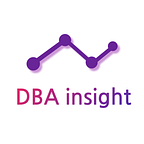What is Database?
Database is a set of systemized data. It stores integrated information of various application system and structuralize them to manage more efficiently. Multiple users can use the database for different tasks. Database is managed by a middleware called ’DBMS (Database Management System)’.
Feature of Database
By DBMS, database prevents duplication of data so it keeps consistency, integrity and security. Database processes and responds to user queries immediately and always keep up-to-date data through creation, modification and deletion. Users can easily access to standardized data and share them. As application system and database are independent, the logical structure of the data and the applications operates separately. However, as the system is very complex, you have to pay high costs and contact DB experts to use database.
What is RDBMS?
RDBMS is the most reliable and widely used DBMS which creates and modifies the relational database. It quickly classifies, aligns and navigates data in RDB. RDB is a database based on relational data models. A relational data model is one of the necessary ways to organize data, which all data is represented in a two-dimensional table form. The table form consists of data attribute and attribute value. Structuring data means finding the correlation between these objects.
Database schema
Database schema describes table structure, form and relation information in formal language. The first thing you should do when storing data using RDB is defining the common attribution of data and defining it as column. In most cases several tables are made and the attributes like table structure, form, relations are defined. We call this schema, which is a kind of schematic diagram. Each database has languages to make schema, and you can make same structure of database using the schema.
SQL(Structured Query Language)
SQL is a language used to define, manipulate, and control data in a database. It is used for almost all operations related to the database especially to deal with RDB. SQL syntax can be divided in 3 parts by purpose: Data Definition Language(DDL), Data Manipulation Language(DML) and Data Control Language(DCL). DDL is a command to create, delete, or change the structure of a database or table. CREATE, ALTER, DROP are the main commands of DDL. DML is a command to process, query, or retrive data stored in a database. The main commands are INSERT, UPDATE, DELETE, SELECT. Lastly, DCL control the sequrity and integrity of data in order to manage the data stored in database. GRANT, REVOKE are the main commands.
SQL standards include ‘SQL-86’, ‘SQL-2003’, and ‘SQL-2008’ as determined by ISO or ANSI.
The examples of RDBMS
1. Oracle: In 1979, Oracle first serviced commercialized SQL DBMS. It is one of the most widely used RDBMS and is practically the standard of SQL. Started as Unix-optimized small networks, now you can use oracle in every platform based on Windows and UNIX.
2. DB2: In 1983, IBM started service with RDBMS including server function. Before 1983 it could only be operated on computers, so it did not increase its market share compared to Oracle. It’s RDBMS, which has a long history like Oracle, just looking at the test period. Currently, it is available on all platforms based on Windows and UNIX.
3. SQL Server: In 1989 MS started SQL server 1.0 service which can operate on 16bit based server. You can only use it on Windows platform.
4. Postgre SQL: It was created by the project of University of California, Berkeley and in 1989, ver1 service started in commercial service form. As it was made by efforts of university students, researchers and professors, we can say that it is software developed open source community. As it pursues a fairly experimental and progressive function, it recently develops and updates necessary function.
5. MySQL: In 1995, the service was first started as a commercial version of MySQL. It was developed through an open source community like PostgreSQL. Initially, it was developed for a lighter DB than other DBs, so it had only the minimum required functions, but now it is merged with Oracle and has better and more stable functions than other RDBMS through periodic management and extended functions.
6.SQLite: With the recent development of electronics industry, embedded systems have become important and this is a light RDBMS developed for embedded use. The usage has dramatically increased as most of the washing machines, smartphones, and cars use this system.
